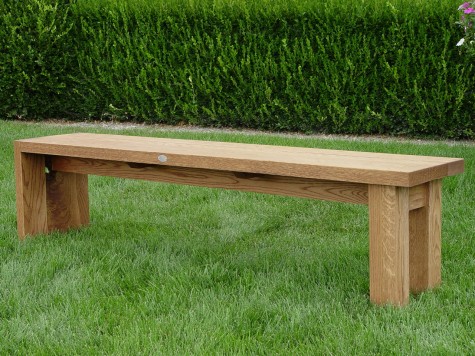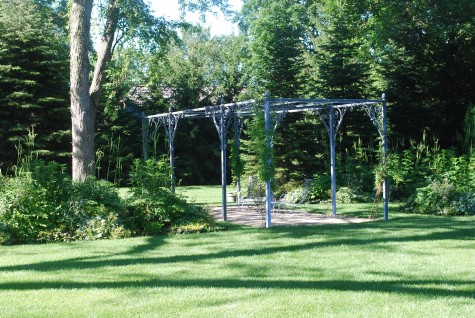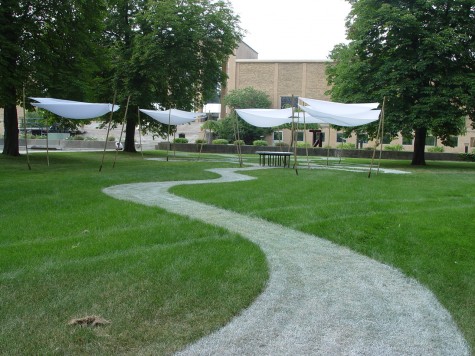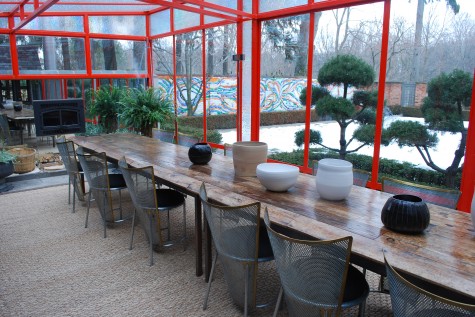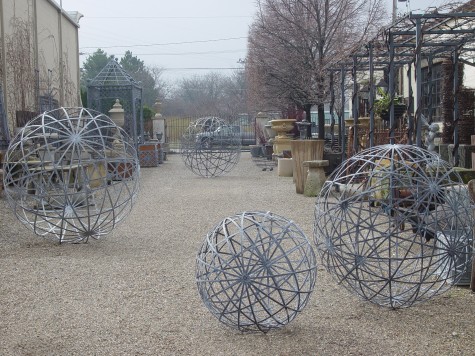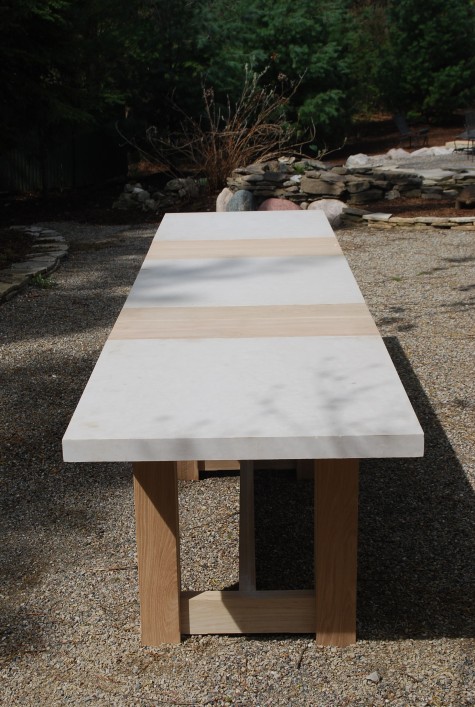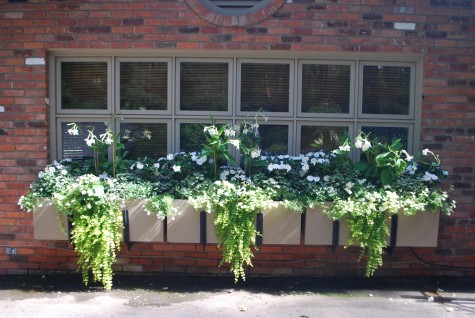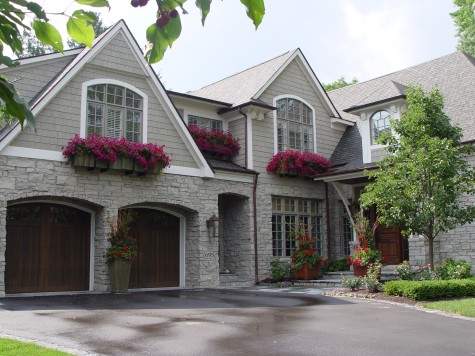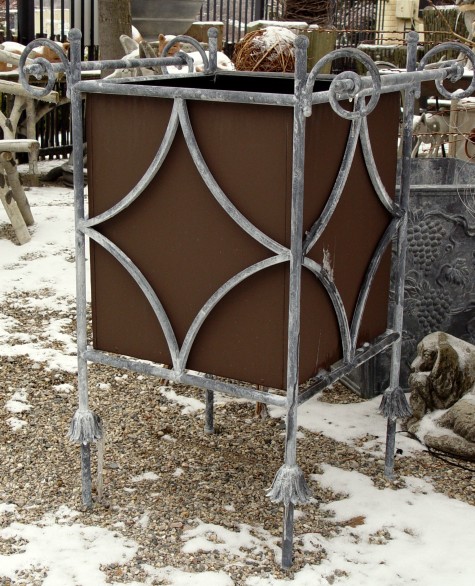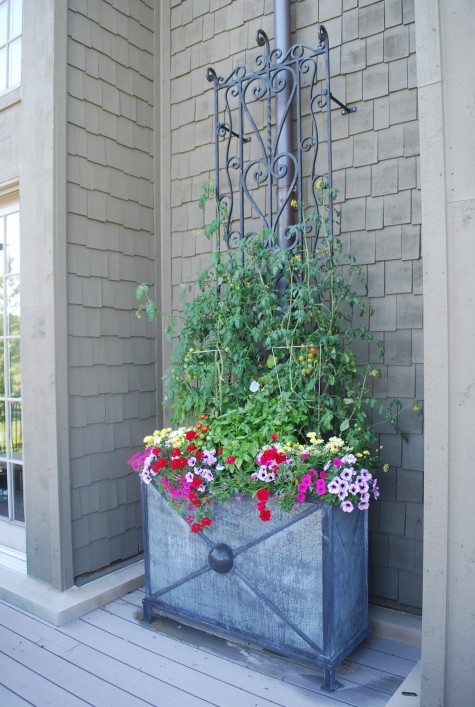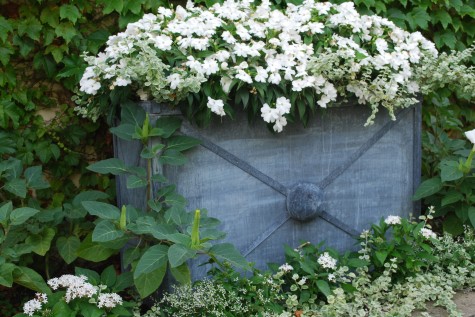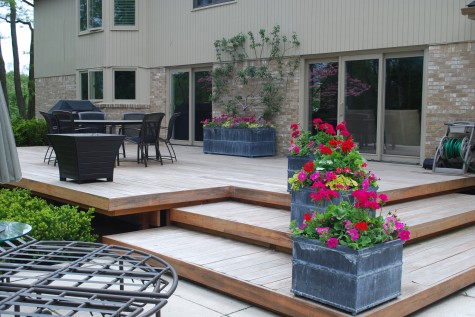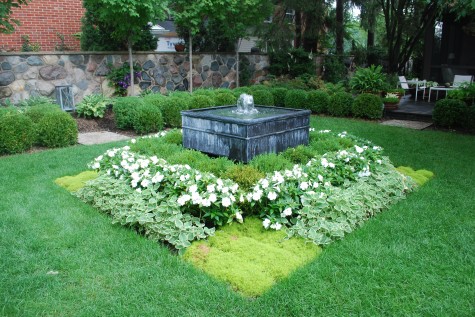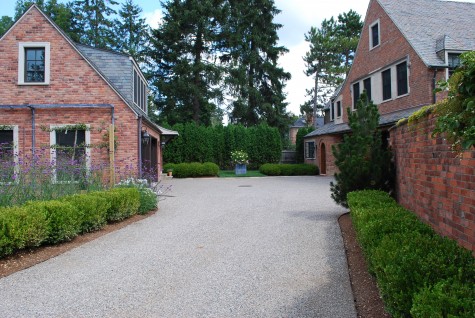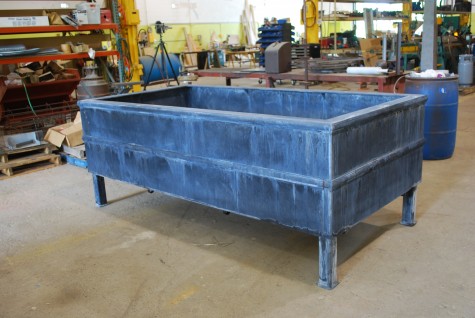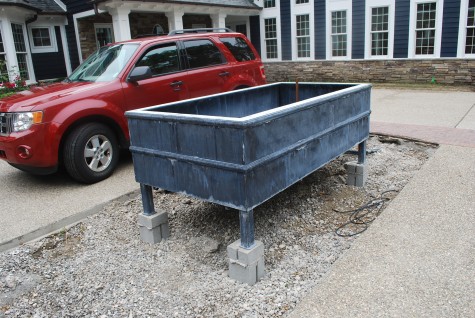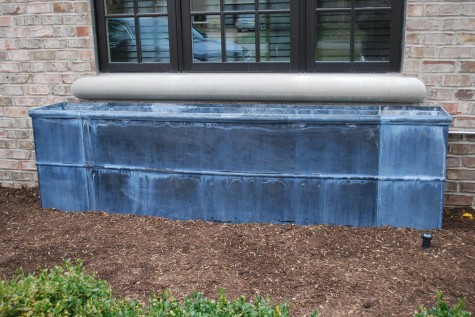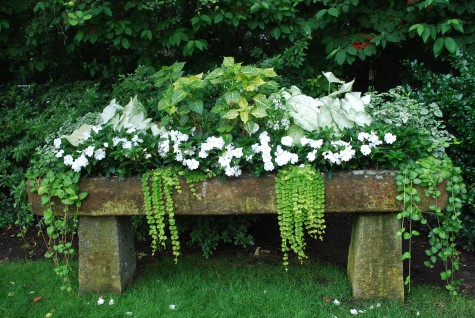 Every landscape presents something upon which the eye will focus. Designing with the intent of guiding the eye can be the toughest part of the design process, as you may need to envision something which is not yet there. Or the visiting eye may focus on something to which your eyes have become so accustomed, you literally do not see it any more. Garbage cans, pool equipment, air conditioning units-these are prime examples of what may be more prominent in your landscape than what you imagine. I often see transformers and air conditioning equipment surrounded by giant hedges. I wonder if this hedge style treatment does not in fact draw more attention to an unsightly object than the unsightly object itself. The very beautiful object pictured above, an English trough of considerable age; was placed where the lawn becomes a mixed shrub border. The border itself is quiet and unassuming; the planted trough organized the space visually in a strong and lively way. The white flowers can be seen from a great distance in several directions.
Every landscape presents something upon which the eye will focus. Designing with the intent of guiding the eye can be the toughest part of the design process, as you may need to envision something which is not yet there. Or the visiting eye may focus on something to which your eyes have become so accustomed, you literally do not see it any more. Garbage cans, pool equipment, air conditioning units-these are prime examples of what may be more prominent in your landscape than what you imagine. I often see transformers and air conditioning equipment surrounded by giant hedges. I wonder if this hedge style treatment does not in fact draw more attention to an unsightly object than the unsightly object itself. The very beautiful object pictured above, an English trough of considerable age; was placed where the lawn becomes a mixed shrub border. The border itself is quiet and unassuming; the planted trough organized the space visually in a strong and lively way. The white flowers can be seen from a great distance in several directions.
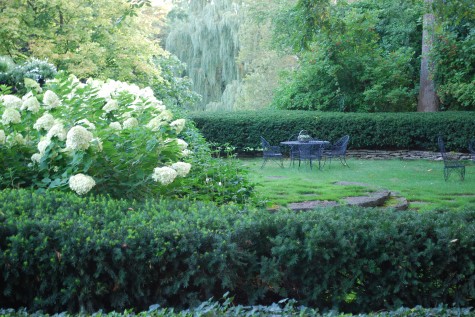 Garden furniture can likewise punctuate a landscaped space to good effect. This landscape has a natural and park-like feeling. Though this dining suite may not be a dinner destination, it encourages vistors to linger in the garden by providing seating. Though the furniture is wirework, it becomes a visually organizing metaphor for the intent of landscape. Parks usually provide places for people to be, and observe the outdoors.
Garden furniture can likewise punctuate a landscaped space to good effect. This landscape has a natural and park-like feeling. Though this dining suite may not be a dinner destination, it encourages vistors to linger in the garden by providing seating. Though the furniture is wirework, it becomes a visually organizing metaphor for the intent of landscape. Parks usually provide places for people to be, and observe the outdoors.
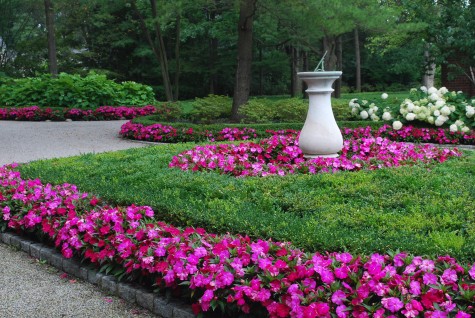 This very fine antique English sundial holds court in this landscape. Aided and abetted by its massive size, striking shape, and pale limestone material, it grabs the eye the moment it comes into view.
This very fine antique English sundial holds court in this landscape. Aided and abetted by its massive size, striking shape, and pale limestone material, it grabs the eye the moment it comes into view.
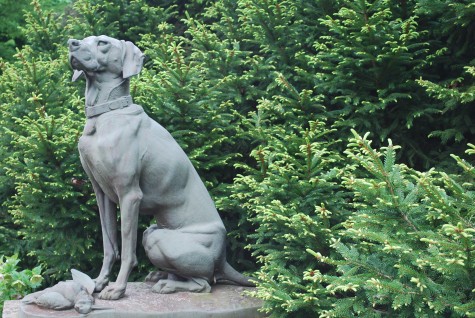 This 19th century French cast iron hound is one of a pair, flanking the entrance to my drive. I see my driveway twice a day-this makes it an important garden to me. My picea mucrunulatum is a gorgeous old plant; they were in my front yard when I bought my house 15 years ago. I moved them to the drive, so I would be sure to see them every day. The dogs draw one’s eye first, they invite a viewer to look more closely at this beautiful evergreen.
This 19th century French cast iron hound is one of a pair, flanking the entrance to my drive. I see my driveway twice a day-this makes it an important garden to me. My picea mucrunulatum is a gorgeous old plant; they were in my front yard when I bought my house 15 years ago. I moved them to the drive, so I would be sure to see them every day. The dogs draw one’s eye first, they invite a viewer to look more closely at this beautiful evergreen.
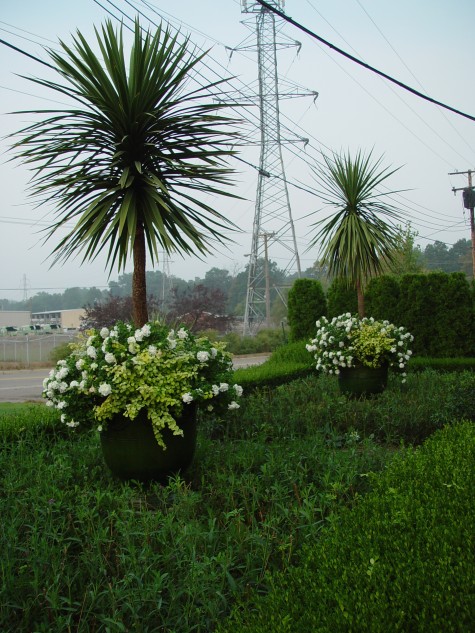 Not every local point is an object. These old spikes-who could pass them by? One year I had in my mind to do an annual garden with a little Mediterranean feeling. Those massive spiky heads atop those gnarly trunks-noticeable. Most of the visual vistors to my shop are the people who drive by every day. A focal point of this scale is sufficiently significant enough for a quick look. It might even encourage someone of gardening ilk to turn around and come back for a more thorough look-see.
Not every local point is an object. These old spikes-who could pass them by? One year I had in my mind to do an annual garden with a little Mediterranean feeling. Those massive spiky heads atop those gnarly trunks-noticeable. Most of the visual vistors to my shop are the people who drive by every day. A focal point of this scale is sufficiently significant enough for a quick look. It might even encourage someone of gardening ilk to turn around and come back for a more thorough look-see.
 This weathered English teak bench is handsome and solid. One hardly notices the browning tips on the boxwood, or the hose. Some objects have the power to distract one’s eye away from something that is not so lovely. If I had to have a hose available in the garden, I would want to stash it under just such a bench as this one.
This weathered English teak bench is handsome and solid. One hardly notices the browning tips on the boxwood, or the hose. Some objects have the power to distract one’s eye away from something that is not so lovely. If I had to have a hose available in the garden, I would want to stash it under just such a bench as this one.
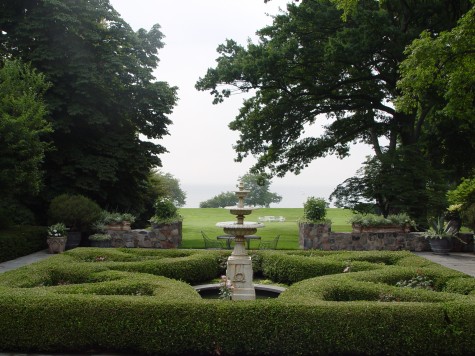 This landscape has a stunning distant view of a lake, and mature trees. But this 19th century American made fountain does a great job of holding the entire view together. In the lawn, a suite of white wood garden furniture. The furniture helps to visually describe how far away the space is from the spot where I am standing. It further more organizes the lawn space. I do love the composition of this landscape from this particular view. There is a strongly represented foreground, a defined mid-ground, and a dreamy far ground. The large trees between the lawn and the lake proide a quiet backdrop for the fountain. They also further define “at a distance” in a visual way.
This landscape has a stunning distant view of a lake, and mature trees. But this 19th century American made fountain does a great job of holding the entire view together. In the lawn, a suite of white wood garden furniture. The furniture helps to visually describe how far away the space is from the spot where I am standing. It further more organizes the lawn space. I do love the composition of this landscape from this particular view. There is a strongly represented foreground, a defined mid-ground, and a dreamy far ground. The large trees between the lawn and the lake proide a quiet backdrop for the fountain. They also further define “at a distance” in a visual way.

This concrete furniture I no longer have, but I did like what it did for the front of the shop. Concrete chairs are completely impractical for a dining space that gets used every day in the summer, but they are a great choice for providing a focal point in a garden. I have the luxury of changing what sits between these trees every year. What pleases you in an ornament, beautifully placed, can influence the look and mood of your entire landscape.
![Hudson-Planters[1]](https://deborahsilver.com/wp-content/uploads/2010/07/Hudson-Planters1.jpg)
